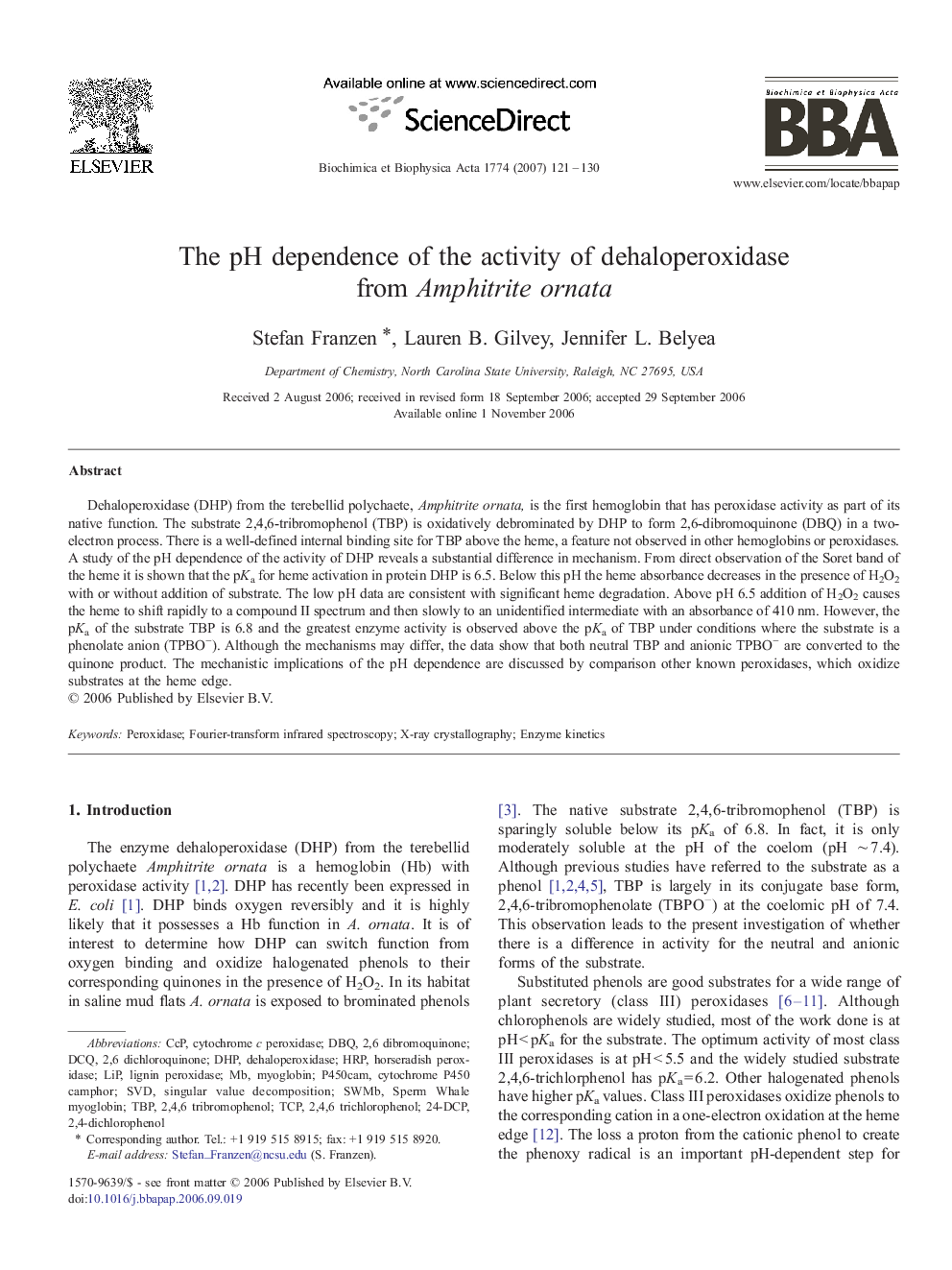| Article ID | Journal | Published Year | Pages | File Type |
|---|---|---|---|---|
| 1180784 | Biochimica et Biophysica Acta (BBA) - Proteins and Proteomics | 2007 | 10 Pages |
Abstract
Dehaloperoxidase (DHP) from the terebellid polychaete, Amphitrite ornata, is the first hemoglobin that has peroxidase activity as part of its native function. The substrate 2,4,6-tribromophenol (TBP) is oxidatively debrominated by DHP to form 2,6-dibromoquinone (DBQ) in a two-electron process. There is a well-defined internal binding site for TBP above the heme, a feature not observed in other hemoglobins or peroxidases. A study of the pH dependence of the activity of DHP reveals a substantial difference in mechanism. From direct observation of the Soret band of the heme it is shown that the pKa for heme activation in protein DHP is 6.5. Below this pH the heme absorbance decreases in the presence of H2O2 with or without addition of substrate. The low pH data are consistent with significant heme degradation. Above pH 6.5 addition of H2O2 causes the heme to shift rapidly to a compound II spectrum and then slowly to an unidentified intermediate with an absorbance of 410Â nm. However, the pKa of the substrate TBP is 6.8 and the greatest enzyme activity is observed above the pKa of TBP under conditions where the substrate is a phenolate anion (TPBOâ). Although the mechanisms may differ, the data show that both neutral TBP and anionic TPBOâ are converted to the quinone product. The mechanistic implications of the pH dependence are discussed by comparison other known peroxidases, which oxidize substrates at the heme edge.
Keywords
Related Topics
Physical Sciences and Engineering
Chemistry
Analytical Chemistry
Authors
Stefan Franzen, Lauren B. Gilvey, Jennifer L. Belyea,
